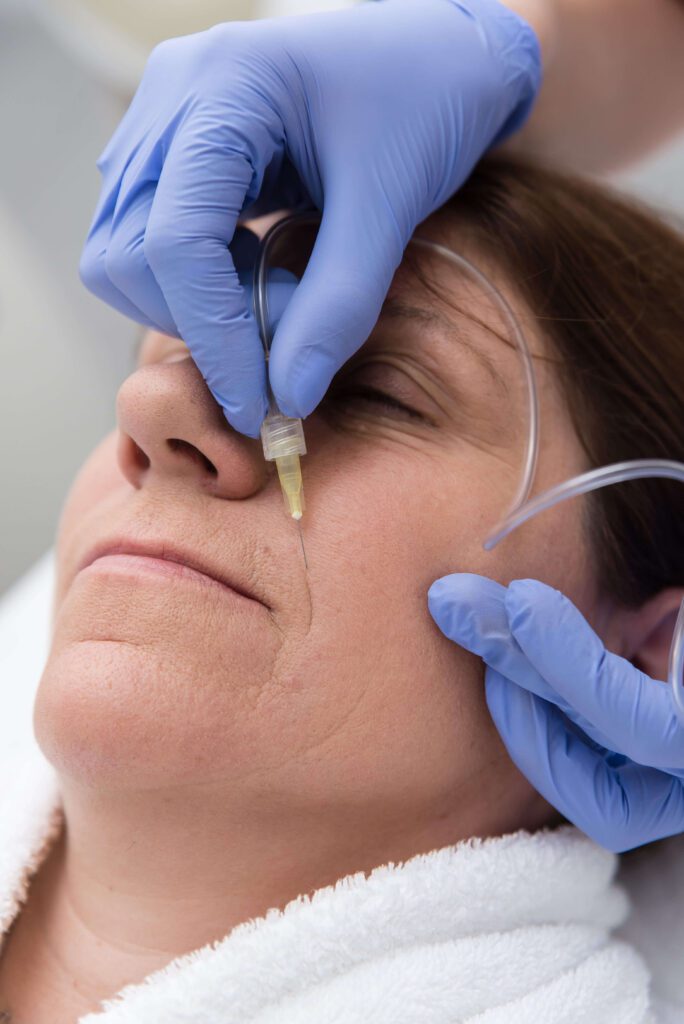Carboxytherapy
As the aging process unfolds, capillaries deliver less oxygen to skin cells and subcutaneous tissue. The skin loses its elasticity and produces less collagen and elastin. Since the skin is not a vital organ, oxygen is only delivered to it once the oxygen needs of other organs are met. The oxygen percentage in the skin also decreases with age. Due to this oxygen deficiency, the skin becomes more prone to premature aging, the formation of acne, and redness.


Treatment
Carboxytherapy is a method where carbon dioxide gas is injected under the skin, which the skin interprets as an oxygen deficit. Consequently, blood vessels expand, allowing for a higher concentration of oxygen and promoting the creation of growth factors that stimulate the formation of new blood vessels. The result is accelerated circulation in the treated area, reduction in edema (swelling), and the delivery of nutrients. Improved blood supply encourages the production of new collagen, reducing the appearance of fine wrinkles, stretch marks, and dark circles around the eyes. In fatty tissue, CO2 destroys fat cells and stimulates the formation of new blood vessels. In scar tissue from acne, injecting CO2 acts like subcision that breaks down the scar’s connective tissue, also promoting oxygenation. The CO2 is warmed before application, making the treatment pleasant and painless.
During therapy, one might feel mild pressure, pulsing, or crepitus upon touch (an auditory phenomenon of crackling when touching the treated area), which subsides within two to four minutes. As it’s highly soluble, CO2 quickly diffuses into surrounding tissues and is reabsorbed within five minutes. Carbon dioxide is not an embolizing gas, so there’s no fear of external pressure or blood vessel occlusion. After carboxytherapy, there may be slight redness in the treated zone due to stimulated circulation and oxygen influx.
Candidates
Carboxytherapy is a method used for individuals with the following conditions:
- Acne and acne scars
- Dark circles around the eyes
- Puffy under-eyes with capillary seepage
- Fine wrinkles around the eyes and on the face
- Wrinkles on the neck and décolleté
- Body stretch marks
The treatment is contraindicated for pregnant women, active tumors, infections and inflammations, photosensitive conditions like systemic lupus, the intake of photosensitive drugs, severe heart diseases, and a tendency to scar.
Results
For full results, it’s advisable to undergo 4 to 6 carboxytherapy treatments with a gap of 2 to 4 weeks between each session. Most individuals notice a difference after just 2 treatments. The final result can be expected after 2 to 6 months when the effect of collagen synthesis and tissue remodeling becomes visible. It is recommended to undergo one cycle annually to maintain good results.
Recovery
After the treatment, it’s advised not to immerse the treated area in water for 4 hours. Post-treatment, one might experience mild bruises, swelling, and sensitivity which subside within a few days.